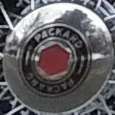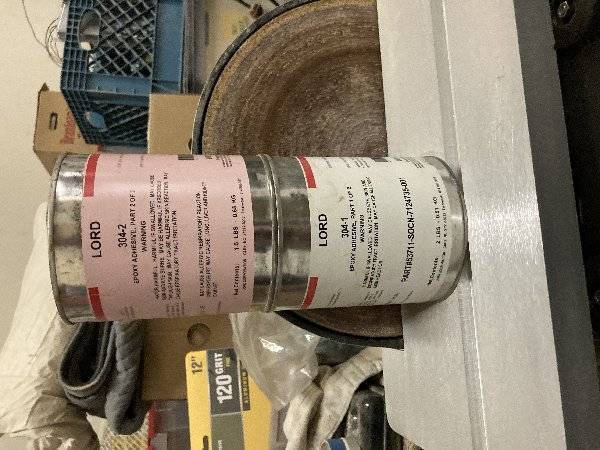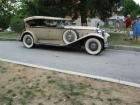|
Re: 1937 "120" Running Board Rubber Installation
|
||||
|---|---|---|---|---|
|
Not too shy to talk
|
37 is similar to yours I believe, It is not a simple job and due to poor advice I did it twice. If I can help anyone thru what I learned I am happy to try.
Dick
Posted on: 2020/7/28 21:31
|
|||
|
||||
|
Re: 1937 "120" Running Board Rubber Installation
|
||||
|---|---|---|---|---|
|
Just can't stay away

|
Thanks everyone for the great advice, I will definitely use the Weldwood adhesive. I'm still not clear on what to use to fill in the areas between the ridges on the running boards? I had purchased the mats a few years ago from Steele and they are flat bottomed. A vendor in Hershey told me to use bondo for a flat surface but I question this? I now understand there is another vendor selling replacement mats that are not flat bottomed but I have to stick with what I purchased already since they are quite pricey.
Thanks Dave
Posted on: 2020/8/3 20:18
|
|||
|
||||
|
Re: 1937 "120" Running Board Rubber Installation
|
||||
|---|---|---|---|---|
|
Home away from home

|
I ran into this same problem back in the 1980's. I cut strips of sheet neoprene to fill in between the ridges and cemented them in place, then cemented the running board matting over top of it. This worked very well, the mats still looked good and stayed in place when I sold it in 2003. Good luck with your project.
Posted on: 2020/8/3 20:49
|
|||
|
Don Shields
1933 Eight Model 1002 Seven Passenger Sedan 1954 Convertible |
||||
|
||||
|
Re: 1937 "120" Running Board Rubber Installation
|
||||
|---|---|---|---|---|
|
Home away from home
|
Resurrecting this thread. I wish i researched more before i purchased the Running Board pads from Steele.
So it sounds like I need to basically make the running boards a flat surface to ensure good adhesion with the Pads. Based on previous experience: 1. What is the best adhesive to use. 2. What was the best way to make the running boards "flat" (filling in ridges) 3. Any other tips or tricks folks can share! Thanks in advance! Ben
Posted on: 4/10 13:48
|
|||
|
||||
|
Re: 1937 "120" Running Board Rubber Installation
|
||||
|---|---|---|---|---|
|
Forum Ambassador
|
Steele used to recommend the old standby of water resistant or solvent type contact cement and then later they suggested a 3M weatherstrip and trim cement. You might ask them if they still have the same recommendations or now have a better idea. There is an old thread at AACA where some other recommendations and procedures are discussed. An epoxy adhesive used on floors has one poster saying he had good results. The one shown in the post above by Dell might work well. If you do a search for runningboard cement several posts in various other old car forums come up asking the same question with more recommendations.
From everything I have read about fresh rubber it continues to emit oils as it dries out so anything you use will require a very thorough cleaning of the rubber before application. As to the grooves, if they are not too deep I would think a waterproof or good quality Bondo might do the job if sanded flush. POR 15 also has a putty like seam sealer and filler that might work better in thick applications but that is probably an expensive overkill. Maybe a coat of POR 15 paint primer would be a good followup over whatever you use to encapsulate and avoid any rust on the metal and also coat and eliminate any porosity in the Bondo or other filler.
Posted on: 4/10 14:28
|
|||
|
Howard
|
||||
|
||||
|
Re: 1937 "120" Running Board Rubber Installation
|
||||
|---|---|---|---|---|
|
Home away from home
|
Howard, they are not grooves but rather are raised upward under where each rib was. This not only strengthened the steel but also required less rubber for the vulcanizing process. They really can't be ground away as doing so would leave gaps, kind of like trying to grind off an anti-theft number from the firewall.
Posted on: 4/10 14:51
|
|||
|
||||
|
Re: 1937 "120" Running Board Rubber Installation
|
||||
|---|---|---|---|---|
|
Forum Ambassador
|
Don, I wasn't thinking of grinding any metal off but rather filling the hollows or grooves to build up the entire surface to the top of the metal. After that sand the filler smooth with wherever the top metal is to make a smooth flat surface for the rubber to lay on. The support would overall be thicker. I don't know how deep the hollows are so that is a concern about how thick the filler would be. The issue with cracking and filler falling off is the usual concern with thick applications although I am not sure that would be of concern here since it could not fall off.
If there was a way to get the boards absolutely flat and level for several hours you might even be able to use something like a self leveling epoxy floor repair compound to fill the hollows. That can stand thicker layers.
Posted on: 4/10 15:08
|
|||
|
Howard
|
||||
|
||||
|
Re: 1937 "120" Running Board Rubber Installation
|
||||
|---|---|---|---|---|
|
Webmaster
|
If I had to deal with this problem, I'd probably go this route, vs trying to "Bondo" the surface smooth. Also, Weldwood for the adhesive vs the 3M weather strip adhesive.
Quote:
Posted on: 4/10 15:27
|
|||
|
-BigKev
1954 Packard Clipper Deluxe Touring Sedan -> Registry | Project Blog 1937 Packard 115-C Convertible Coupe -> Registry | Project Blog |
||||
|
||||
|
Re: 1937 "120" Running Board Rubber Installation
|
||||
|---|---|---|---|---|
|
Forum Ambassador
|
The strips are not a bad idea either and as long as they are somewhat contoured and cemented together should be a good choice. Metro or Steele might even have an extruded universal type strip in a shape that would somewhat fit the hollows that could be used. If not McMaster has strips in various widths and thicknesses that could be stacked rather than cutting several long different width strips out of sheet rubber.
Posted on: 4/10 15:40
|
|||
|
Howard
|
||||
|
||||

 (259.31 KB)
(259.31 KB)







